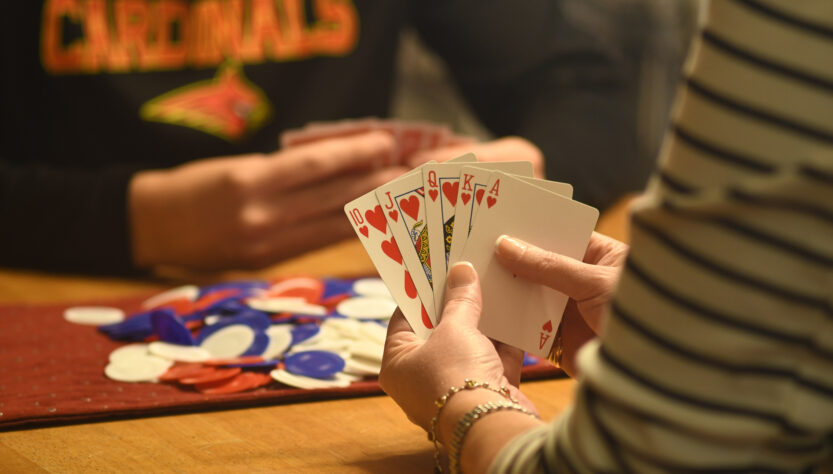Poker thrives on a blend of strategy and psychology. While a strong understanding of hand values and pot odds is crucial in succeeding in the game, deciphering your opponent’s intentions and employing deceptive tactics like bluffing can elevate your poker gaming experience whether in a land-based casino or live casino online in Singapore.
Bluffing is a calculated tactic that involves convincing your opponent that you hold a winning hand when, in reality, your cards might be far less impressive. Mastering this strategy of deception can turn the tide of a game in your favour. Knowing when and how to employ the bluffing tactic is crucial for a successful poker game.
Tips for Better Bluffing
Bluffing can be a powerful tactic to win pots and keep your opponents guessing. However, used haphazardly, it can quickly backfire. Here is how to ensure your bluffs succeed with impact:
Understand the Different Types of Bluffs
There are four ways to bluff at the poker table:
Continuation Bet Bluff
Commonly known as the C-Bet bluff, the continuation bet bluff is the most common bluff practised in poker. It involves continuing a betting pattern established preflop—the round when the two private cards are dealt, and you decide your next action based on your hand. C-bet bluff capitalises on the possibility that your opponent might put you on a strong hand based on your preflop aggression.
Semi-Bluff
This bluff tactic walks a tightrope between deception and value betting. Semi-bluff can be used if you have a decent hand with potential for improvement, such as a draw, but you are also willing to fold if facing strong resistance.
Stone-Cold Bluff
Also called zero-equity bluff, the stone-cold bluff is a high-risk, high-reward bluff tactic involving betting with a hand with minimal chance of improving. This bluff practice is best reserved for specific situations where your opponent has a particularly weak range with plenty of bad hands.
Opportunistic Bluff
This bluff tactic exploits specific situations that arise during gameplay, such as when your opponents are not interested in the pot. Opportunistic bluff can be effective when you have a good read on the hands of your opponents. You can place a wager with the assumption that you will not be challenged and aim to convince other players that you hold the winning hand. But this bluff tactic is best played with small pots and only a few players remain in the game.
Things to Consider When Deciding to Bluff
The key to achieving success in poker is knowing when to bluff and when not to. There are six factors that must be considered before bluffing:
Your Opponent –Analyse your opponents’ playing style. Target your bluffs against players who frequently fold to aggression.
Table Dynamics –Consider the game’s overall flow. A loose table might be more receptive to bluffs, while a tight table demands more selectivity.
Your Position –A late position (closer to the dealer) is relatively more advantageous when bluffing, as you can see how other players react to the board—the collection of community cards available to players. Conversely, bluffing from an early position might be riskier, as you have less information in your opponents’ hands.
Bet Size –Strategise the size of your bluff bet. A small bet might not be enough to scare your opponents away, while an overly large bet might scream “bluff” and get you called down.
Your Table Image –Evaluate how you are seen on the table – as an aggressive or passive player. Bluffing is more believable when it aligns with your perceived table image. For instance, a passive player suddenly dropping a huge bet might raise suspicion.
Strength of Your Hand –Focus your bluffs on situations where you have some equity or chance of improvement in the hand. This way, even if your bluff does not work, you still have a chance to win if the right cards come out.
Avoid Over-Bluffing
Bluffing is a double-edged sword; hence, you must regulate how frequently you practice your bluffing tactics. Over-bluffing can quickly erode your credibility at the poker table. This can lead to opponents catching on to your tactics and calling you down more frequently.
The best practice is to bluff selectively—use it as a surprise weapon in your arsenal instead of being your primary strategy.
How to Tell if Someone is Bluffing in Live Poker Online
While playing poker in an online betting platform in Singapore lacks physical tells, there are still ways to check into your opponents’ intentions. Here are three factors to pay attention to:
Verbal Cues
In online poker, players are still provided a way to communicate with the dealer and their opponents—through verbal communication on live chat functions of online poker platforms. Pay close attention to your opponents’ betting patterns on their chat messages, such as sudden silence, overconfidence, a sudden flurry of chat after a bet, and hesitant or slow typing when faced with a big decision.
Betting Tendencies
The way your opponents bet their chips speaks volumes. Look for inconsistencies in a player’s betting patterns, as these might signal a potential bluff. Here are some key betting patterns to watch for:
Overbetting – A bet significantly larger than the pot size, especially early in the hand, could be a bluff to scare other players out. However, some aggressive players with strong hands also use overbetting for value; hence, you should be cautious and calculative before calling down a bluff.
Min-Raising –A player who consistently raises the minimum amount throughout the hand might be trying to appear passive and cheaply build a pot, potentially for a later bluff.
Donk Betting – Leading out with a bet after check-calling a previous street can be a sign of weakness, particularly if the player does not typically initiate bets.
Frequent Placing of Three-Betting – A player who frequently place three-bet preflop might be bluffing to isolate a single opponent and steal the pot. However, they could also be a very aggressive player with strong holding.
Playstyle
Every player develops a unique approach to poker. Observing other players’ playstyles can help you build a profile to predict their actions and identify potential bluffs. Two of the most common playstyle models are tight playstyle and loose playstyle.
Players with tight playstyle are generally cautious and rarely enter the pot unless they have strong starting hands. Meanwhile, players with a loose playstyle bluff more frequently, entering many pots regardless of their hand strength. Their overall inconsistency can make it difficult to pinpoint their intentions with certainty. The key is to observe their tendencies over multiple hands to form a more complete picture.
Where to Start Your Poker Journey?
Anyone who wants to start exploring poker can register for an account at 88ProBet. We are a reputable platform for online casino gaming and sports betting activities in Singapore, Malaysia, and other Southeast Asian countries.
Our online gambling platform offers the best odds, payouts, and bonuses for online casino games and sports betting markets alike, as we aim to provide the online gaming community with an incomparable casino gaming and sports betting experience.
Register here to start your live poker online gaming journey today!






















